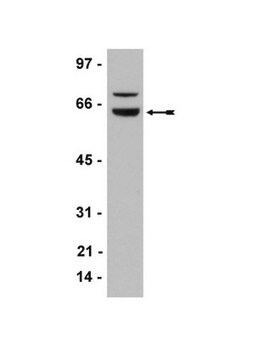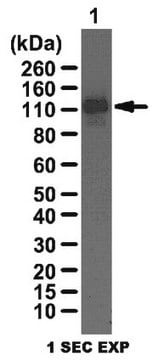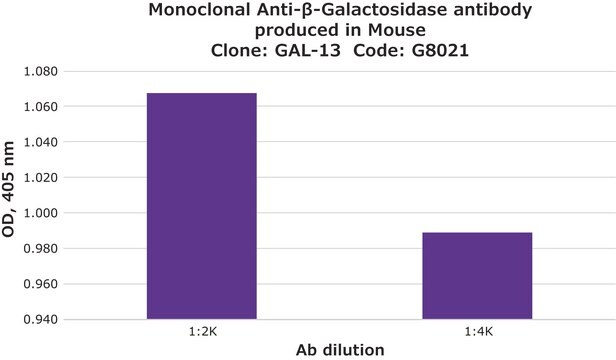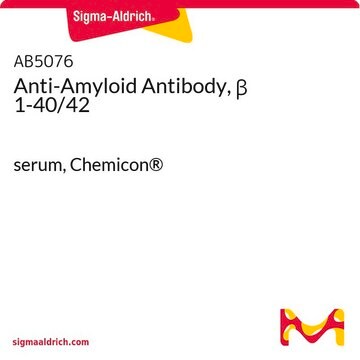05-939
Anti-LSD1/BHC110 Antibody
ascites fluid, Upstate®
Synonyme(s) :
BRAF35-HDAC complex protein BHC110, FAD-binding protein BRAF35-HDAC complex, 110 kDa subunit, Flavin-containing amine oxidase domain-containing protein 2, amine oxidase (flavin containing) domain 2, lysine (K)-specific demethylase 1, lysine-specific hist
About This Item
Produits recommandés
Source biologique
mouse
Niveau de qualité
Forme d'anticorps
ascites fluid
Type de produit anticorps
primary antibodies
Clone
monoclonal
Espèces réactives
mouse, human
Fabricant/nom de marque
Upstate®
Technique(s)
ChIP: suitable
immunofluorescence: suitable
immunohistochemistry: suitable
immunoprecipitation (IP): suitable
western blot: suitable
Numéro d'accès NCBI
Numéro d'accès UniProt
Conditions d'expédition
wet ice
Modification post-traductionnelle de la cible
unmodified
Informations sur le gène
human ... KDM1A(23028)
Description générale
Spécificité
Immunogène
Application
This antibody has been reported by an independent laboratory to immunoprecipitate LSD1 from chromatin.
Immunoprecipitation:
Recommended.
Immunohistochemistry:
This antibody has been reported by an independent laboratory to detect LSD1 using paraffin-embedded tissues. (Metzger, E., 2005)
Immunofluorescence:
Recommended.
Epigenetics & Nuclear Function
Histones
Chromatin Biology
Qualité
Western Blot Analysis:
1:500-1:2000 dilution of this lot detected LSD1 in RIPA lysates from HeLa cells.
Description de la cible
Liaison
Forme physique
Stockage et stabilité
Handling Recommendations:
Upon first thaw, and prior to removing the cap, centrifuge the vial and gently mix the solution. Aliquot into microcentrifuge tubes and store at -20°C. Avoid repeated freeze/thaw cycles, which may damage IgG and affect product performance. Note: Variabillity in freezer temperatures below -20°C may cause glycerol containing solutions to become frozen during storage.
Remarque sur l'analyse
HeLa cell lysate.
Autres remarques
Informations légales
Clause de non-responsabilité
Not finding the right product?
Try our Outil de sélection de produits.
Code de la classe de stockage
10 - Combustible liquids
Classe de danger pour l'eau (WGK)
WGK 1
Certificats d'analyse (COA)
Recherchez un Certificats d'analyse (COA) en saisissant le numéro de lot du produit. Les numéros de lot figurent sur l'étiquette du produit après les mots "Lot" ou "Batch".
Déjà en possession de ce produit ?
Retrouvez la documentation relative aux produits que vous avez récemment achetés dans la Bibliothèque de documents.
Notre équipe de scientifiques dispose d'une expérience dans tous les secteurs de la recherche, notamment en sciences de la vie, science des matériaux, synthèse chimique, chromatographie, analyse et dans de nombreux autres domaines..
Contacter notre Service technique








